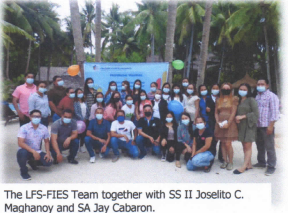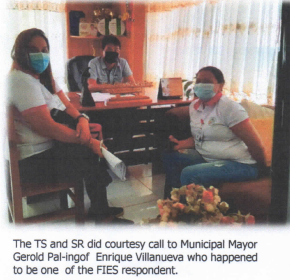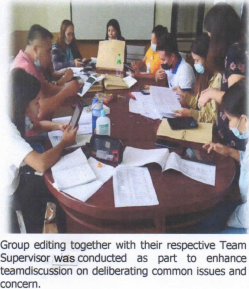
PSA Siquijor conducted the July 2021 Labor Force Survey (LFS) and 2021 Family Income and Expenditure Survey (FIES) First Visit this July 2021. The LFS is being conducted monthly since January 2021aiming to provide high frequency statistical information on the Philippine labor market information to better monitor and understand the current job situation and economy in the Philippines as well as the impact of the current Coronavirus (COVID-19) health crisis. On the other hand, the FIES aims to gather data on family income, sources of income, family expenditure and related information affecting family income and expenditure levels and patterns in the Philippines. FIES survey can provide data on poverty statistics down to the provincial level.
The six-day provincial training was held in Coco Grove Beach Resort, Tubod, San Juan, Siquijor last 28 June 2021 to 03 July 2021. There were 27 Statistical Researchers (SR) being hired to conduct the two surveys. Also, 3 Team Supervisors (TS) were also hired to conduct the supervision and assist the Provincial Focal Person in monitoring the status of operation, conduct spot checking and re-interviewing of selected sample households.


The enumeration started on 08 July 2021 and lasts up to 03 August 2021. The extension of mandays up to August is due to the health protocol implemented to barangay Poo in Lazi, one of the sample barangays, to undergo community quarantine and lockdown.

For the first time, the FIES operation is applying the Computer Assisted Personal Interviewing (CAPI) and is using Android Tablet.The total number of sample households including vacant buildings is 769. All of these samples were completely interviewed, thus 100 percent response rate was attained.
(SGD.) AURELIA M. CANDA
Chief Statistical Specialist

